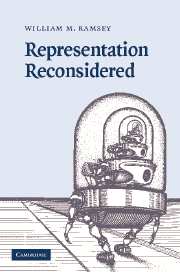Book contents
- Frontmatter
- Contents
- List of figures
- Preface
- 1 Demands on a representational theory
- 2 Representation in classical computational theories: the Standard Interpretation and its problems
- 3 Two notions of representation in the classical computational framework
- 4 The receptor notion and its problems
- 5 Tacit representation and its problems
- 6 Where is the representational paradigm headed?
- References
- Index
3 - Two notions of representation in the classical computational framework
Published online by Cambridge University Press: 12 November 2009
- Frontmatter
- Contents
- List of figures
- Preface
- 1 Demands on a representational theory
- 2 Representation in classical computational theories: the Standard Interpretation and its problems
- 3 Two notions of representation in the classical computational framework
- 4 The receptor notion and its problems
- 5 Tacit representation and its problems
- 6 Where is the representational paradigm headed?
- References
- Index
Summary
In the last chapter, we saw how representation in the CCTC is commonly regarded. In this framework, representation is generally treated as closely linked to our commonsense conception of the mind and, in particular, to our understanding of propositional attitudes. We also saw how this perspective fails to provide an adequate account of why the CCTC needs to appeal to representations at all. If the Standard Interpretation was the only interpretation, we would have little reason to suppose that there is any real explanatory pay-off in treating the posits of classical AI as standing for something else.
But the Standard Interpretation is not the only way to look at things. In this chapter I want to present another perspective on the CCTC, one that I think reveals why the classical framework provides a legitimate home for a robust notion of internal representation. Actually, my claim will be that there are two related notions playing somewhat different but nonetheless valuable explanatory roles. One notion pertains to the inputs and outputs of computational processes which help to define the cognitive task being performed. As we'll see, given the sort of explanatory strategy usually adopted by the CCTC, this also provides a notion of inner representation as well. The second notion pertains to data structures that in classical explanations serve as elements of a model or simulation.
- Type
- Chapter
- Information
- Representation Reconsidered , pp. 67 - 117Publisher: Cambridge University PressPrint publication year: 2007



